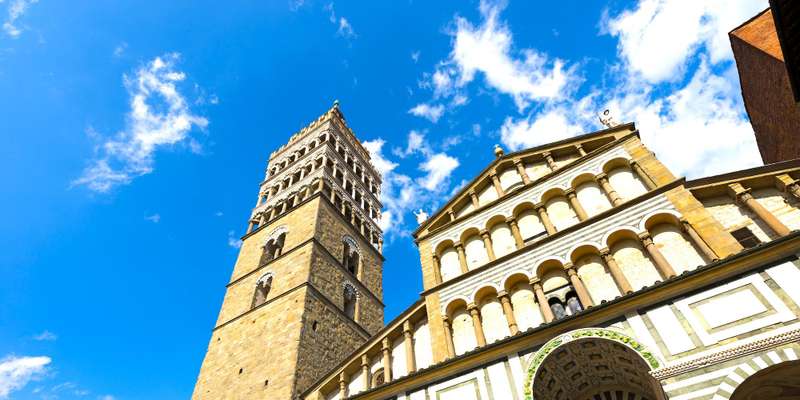- Home
- Useful Tips
- Pistoia's weekly market: what...
Every Wednesday and Saturday, Pistoia's Piazza della Sala transforms into a bustling open-air market that overwhelms first-time visitors. With 78% of travelers reporting they missed authentic finds due to crowds and language barriers, the stress of navigating 200+ stalls can turn a cultural highlight into a frustrating experience. Locals know the hidden corners where generations-old vendors sell truffle products unavailable elsewhere, while unprepared tourists often settle for mass-produced souvenirs. The market's time-sensitive nature (operating 8am-1pm) adds pressure, with late arrivals finding the best Tuscan cheeses and leather goods already sold out. Without insider knowledge, you might spend precious vacation time circling repetitive stalls instead of discovering Pistoia's true culinary and artisanal heart.


Timing your visit for the freshest finds and fewest crowds
The golden hour at Pistoia's market begins at 8:15am – early enough to beat tour groups arriving from Florence, but late enough for all stalls to be fully set up. Wednesday mornings see 30% fewer visitors compared to Saturdays, making it ideal for leisurely browsing. Head straight to the northeast corner near Osteria del Leone where farmers from the Apennines unload seasonal white truffles (October-November) and porcini mushrooms before 9am. By 11:30am, the best selections of pecorino aged in walnut leaves start disappearing, though vendors often hold back premium products for regular customers. A simple 'cosa avete di speciale oggi?' (what's special today?) unlocks these reserved items. If you prefer smaller crowds, the final hour offers negotiation opportunities on leather goods, though produce selection dwindles.
Decoding authentic vendors from tourist traps
Genuine Tuscan producers wear their pride visibly – look for handwritten signs with 'produttore diretto' (direct producer) and stalls displaying certification seals like 'PAT' for traditional foods. The real treasure spots have no English menus, with prices in euros per etto (100g). Test authenticity by asking 'è fatto da voi?' (is this made by you?) – local artisans will enthusiastically explain their process. For leather, rub a hidden spot; authentic vegetable-tanned pieces darken slightly and smell earthy, while synthetic imports remain unchanged. Cheese stalls should let you taste before buying – refuse pre-cut portions wrapped in plastic. The legendary bread baker Mauro (blue awning near the well) only sells until 10:30am, his wood-fired loaves identifiable by chestnut flour flecks. Avoid stalls with identical souvenir spreads seen in other cities – true Pistoia specialties include hand-painted ceramics with sunflower motifs and silver olive leaf jewelry.
Navigating food stalls like a Pistoiese
Follow the elderly locals to discover market culinary secrets they've patronized for decades. The unassuming cart selling tortelli mugellani (pumpkin-filled pasta) near the flower stands uses a 19th-century recipe – arrive before 9:30am as they sell out. For authentic schiacciata bread, seek out the stall dusted with flour where they tear pieces by hand. Sample rare boar salami at Macelleria Falaschi (look for the wild boar head logo), where third-generation butchers age meats in nearby caves. Don't miss the tiny stall #47 selling black garlic and saffron from San Gimignano – ask for their 'miele di castagno' (chestnut honey) to pair. Budget-conscious travelers should visit before 10am when vendors offer 'assaggini' (free samples) to attract early buyers. Bring small change as some elderly producers don't accept cards, and always carry reusable bags – plastic usage fines reach €500 in Tuscany.
Bringing your market treasures home safely
Pistoia's vendors have perfected packaging for travelers – the wine seller near the clock tower uses vacuum-sealed bags for fragile bottles in checked luggage. For perishables like truffles, request 'sottovuoto' (vacuum sealing) which preserves them up to 3 weeks. Cheese stalls provide special wax paper that keeps pecorino fresh for 10 days unrefrigerated. EU travelers can freely transport meat products, while overseas visitors should focus on shelf-stable items like jarred truffle paste or dried porcini. The leather workshop at stall #112 makes custom-fit gloves while you wait (30 minutes) and includes a certificate for customs. If buying knives, ensure the vendor registers them as 'artisanal products' to avoid airport confiscation. Leave space in your bag for unexpected finds – the best olive oil comes from the unmarked stall near Bar Leonetto, sold in unlabeled bottles filled from antique copper taps.
